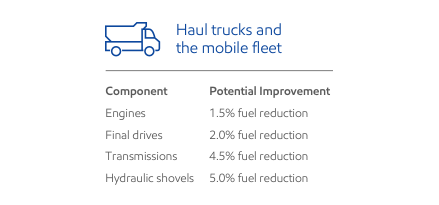The best lubricants for your fleet will also go easy on your fuel.
The right lubricants reduce the need for maintenance, downtime and keep things running smoothly. But there’s another key benefit that often flies under the radar: improved fuel economy. As fuel costs rise, fleet managers look for new ways to save — and the right lubricants might just be the key.
Where do lubricants come in?
It’s easy: lubricants reduce friction. Lower friction means higher efficiency. Compared to a mineral lubricant, synthetic lubricants lower friction due to two key properties: a higher viscosity index and a lower traction coefficient.
A higher viscosity index means relatively less change in viscosity as temperature changes. Synthetic lubricants offer less resistance to flow at lower temperatures and increased film strength at higher temperatures and are often formulated from higher quality base stocks that have a lower traction coefficient compared to a mineral lubricant — which translates to lower friction and better fuel efficiency.
Less friction means your workday is just a bit easier on your engine, which translates into more fuel efficiency.
Which components should you target?
From engines to transmissions to hydraulics, the strategic use of lubricants can help improve efficiency and reduce fuel consumption. In fact, our Mobil experts estimate that the right lubricants can lead to up to a 5% efficiency gain1, which for some fleets could translate into fuel savings of hundreds of thousands of dollars. By choosing a lower viscosity solution, your fleet can operate with improved economy.





